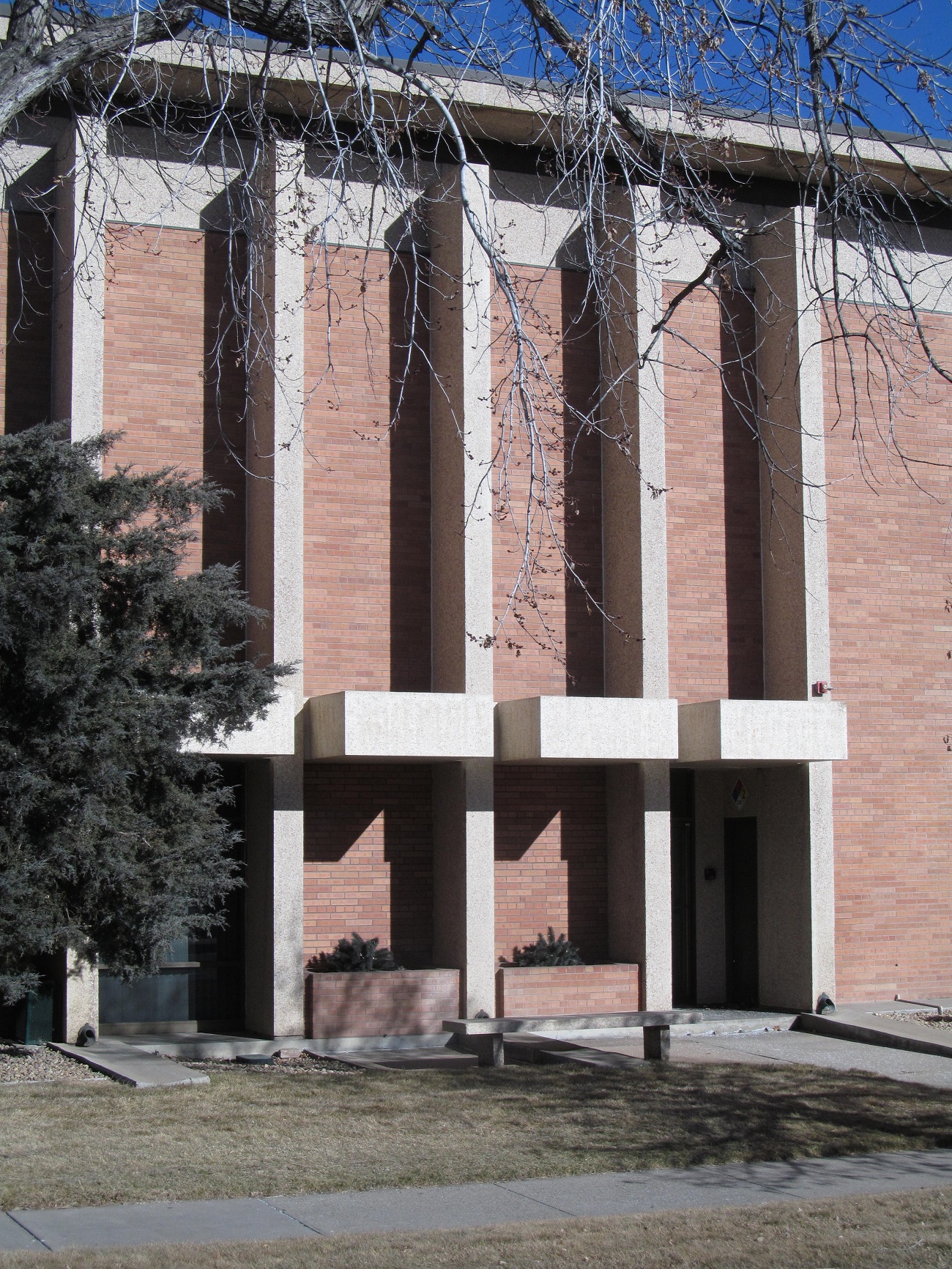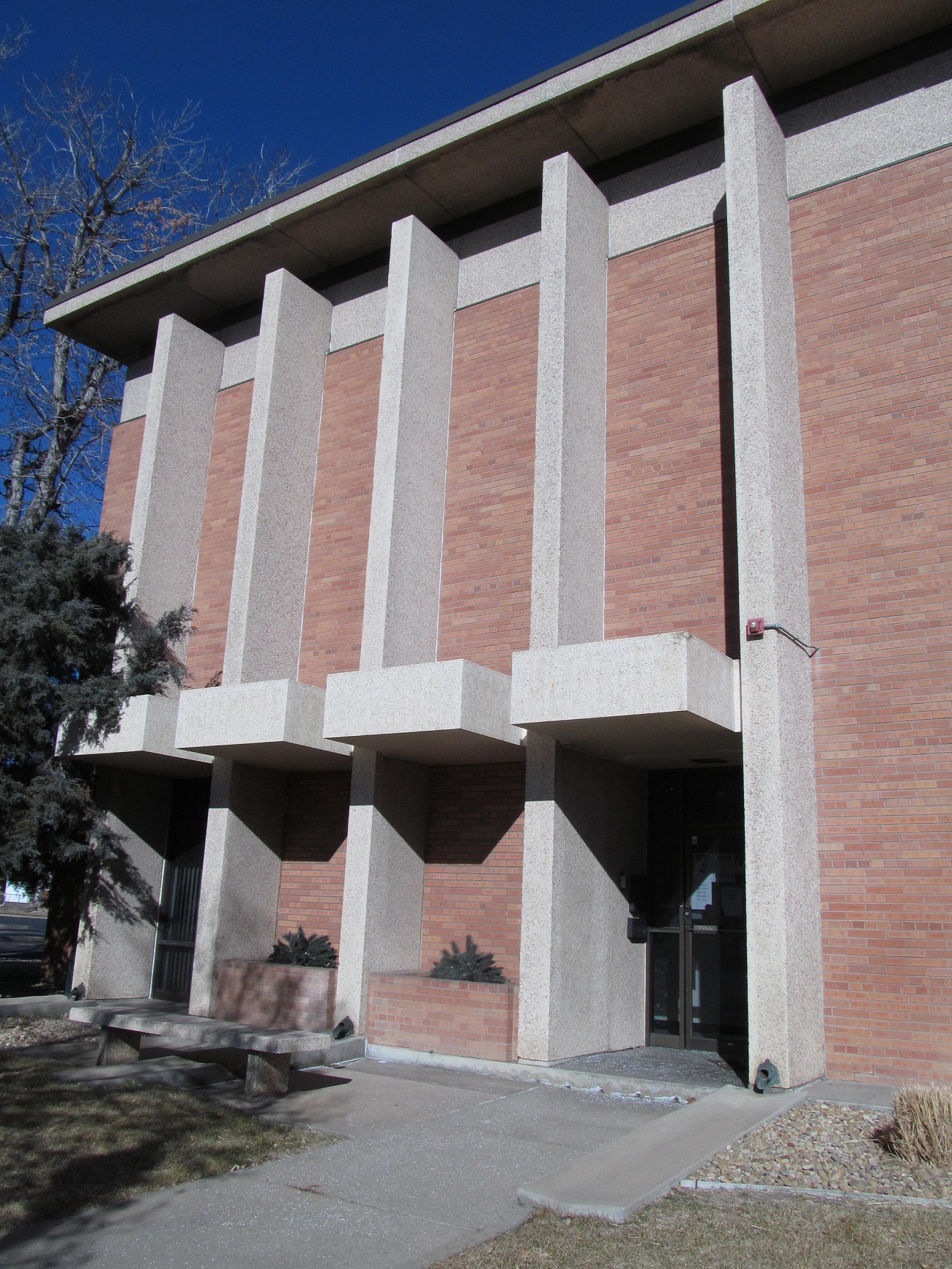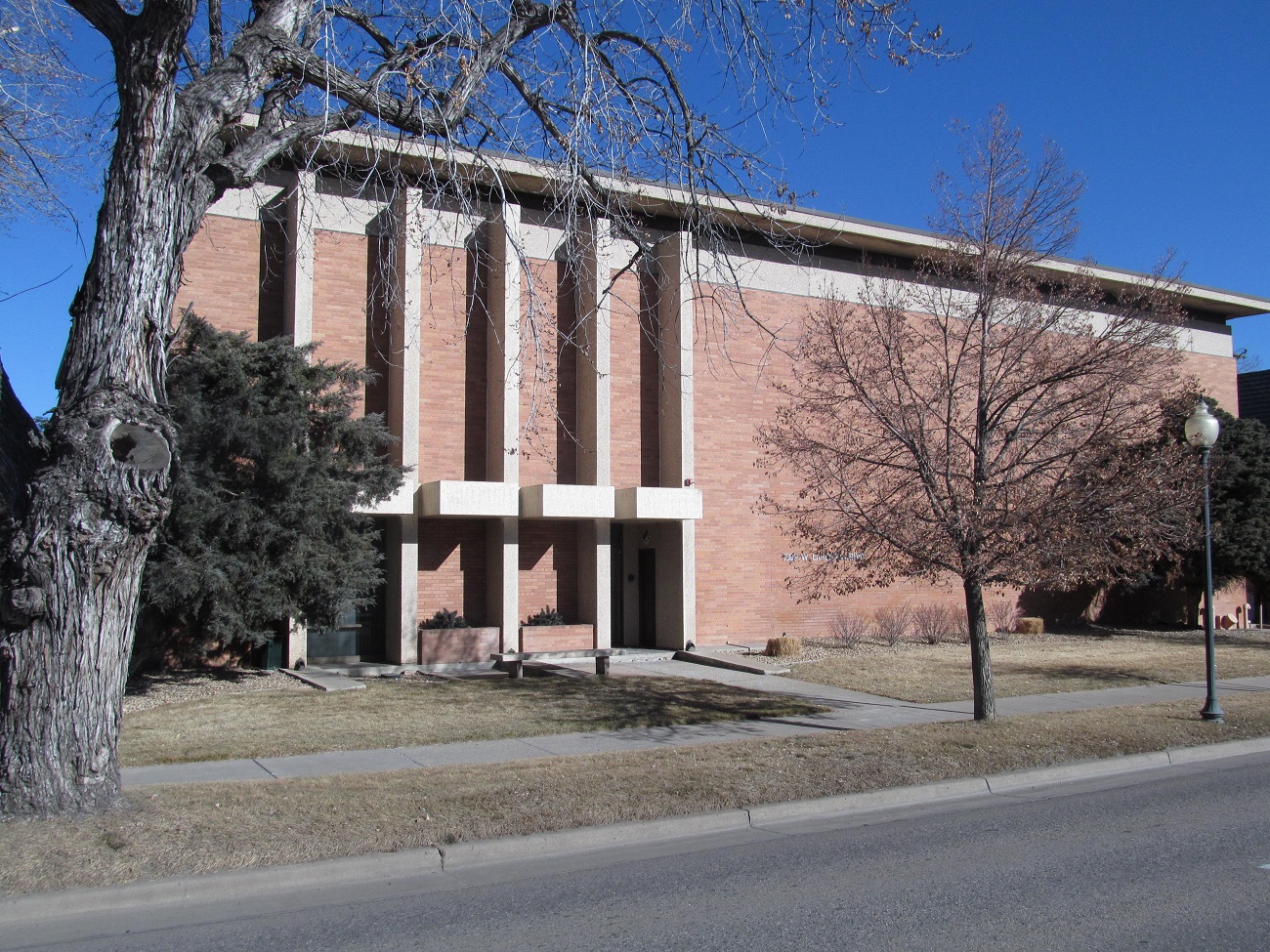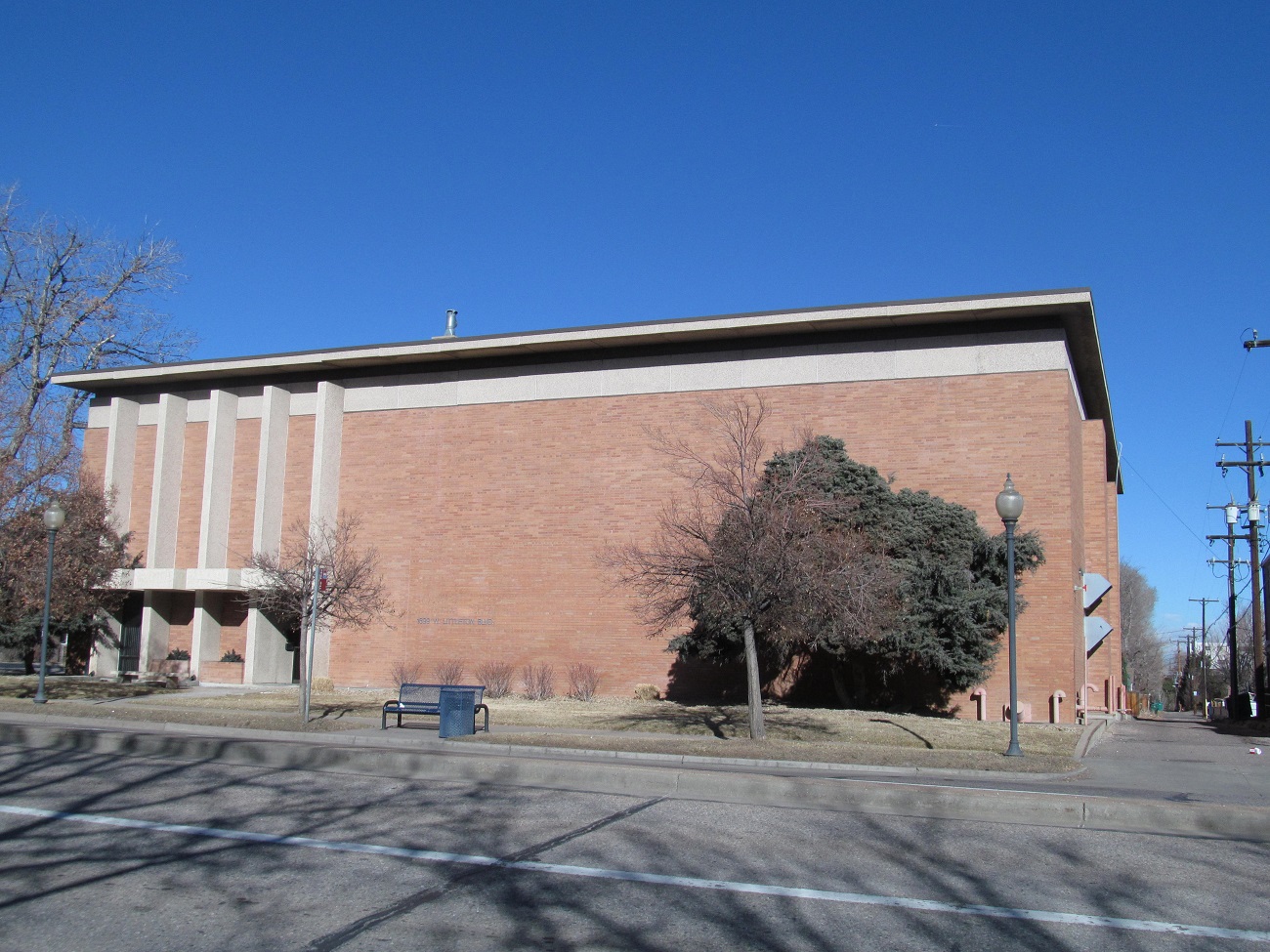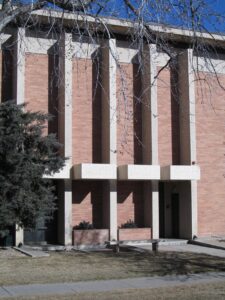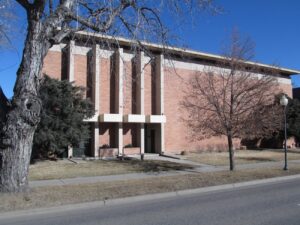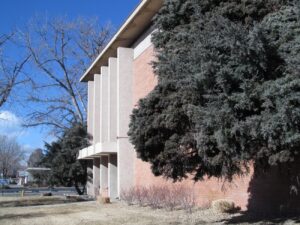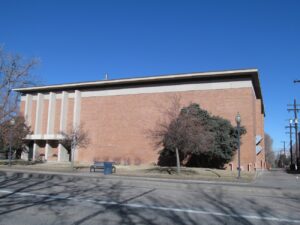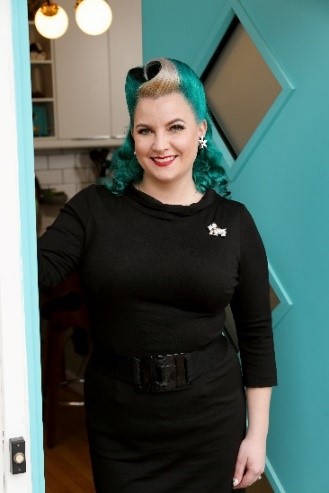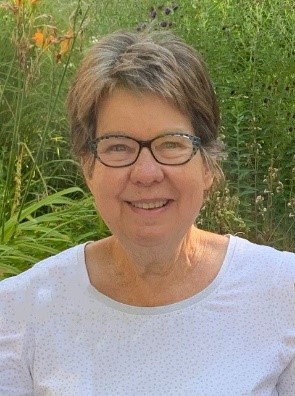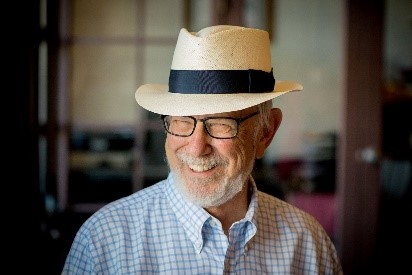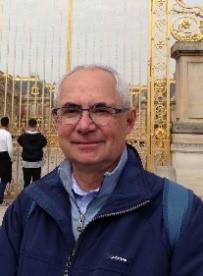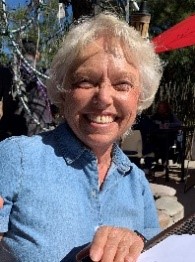The Formalist style Mountain States Telephone and Telegraph building at 1699 W. Littleton Blvd. Temple Buell is a handsome orange brick structure. While chastely elegant like a stately office building, the structure actually serves as a relay station for telecommunications. Despite the utilitarian nature of the building, the company made the effort to construct a sensitively conceived building that fit into the existing neighborhood, and the community-minded spirit paid off. The vertical architectural fins in rough aggregate mark the main entrance, with separate canopies within the fins shading the door and windows at the entry in polished aggregate. At the top of the walls is a frieze in aggregate that separates the building from the roof, which features a deep cantilevered eave-line that creates the illusion that the roof is floating.
The ribbon windows on the side have been framed in aggregate, most likely to reflect the aggregate stucco houses on the adjacent Louthan Street historic district. Buell incorporated an entry court, integral planters, a planter box at grade, and freestanding benches, all constructed of brick, concrete, or exposed aggregate concrete that mirrored the materials of the building itself. The building also displays a broad front lawn like the nearby homes and the church next door.
According to the “Live in the Suburbs, Shop in the Suburbs” report, “Temple Buell’s Mountain States Telephone and Telegraph building facilitated the 1954 transition to rotary dial phones with a Pyramid exchange. In 1961, it was replaced by the 10 digits to facilitate push button dialing scheduled for 1964.” Today, the building houses servers for the microwave/Internet age.
Photographed by Rick Cronenberger
ShowDocument (littletongov.org)
Sources: “Commercial Modernism in the Greater West Littleton Boulevard Corridor, 1950–1980” by Michael Paglia and Diane Wray Tomasso and “Context of Littleton Colorado 1949–1967” by Diane Wray Tomasso.

